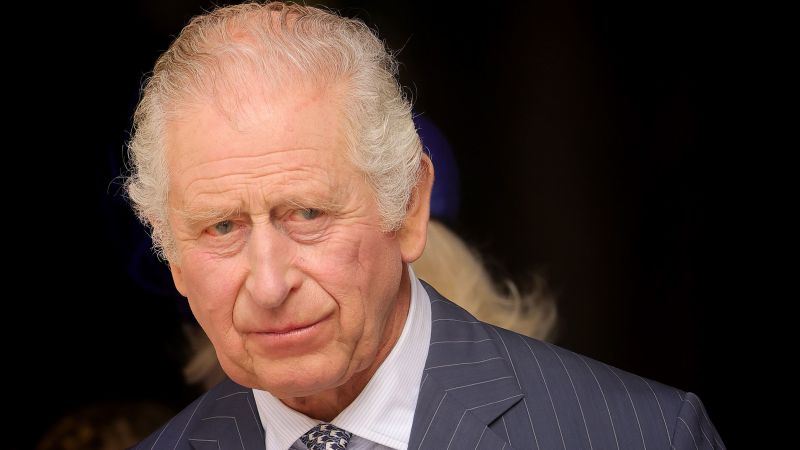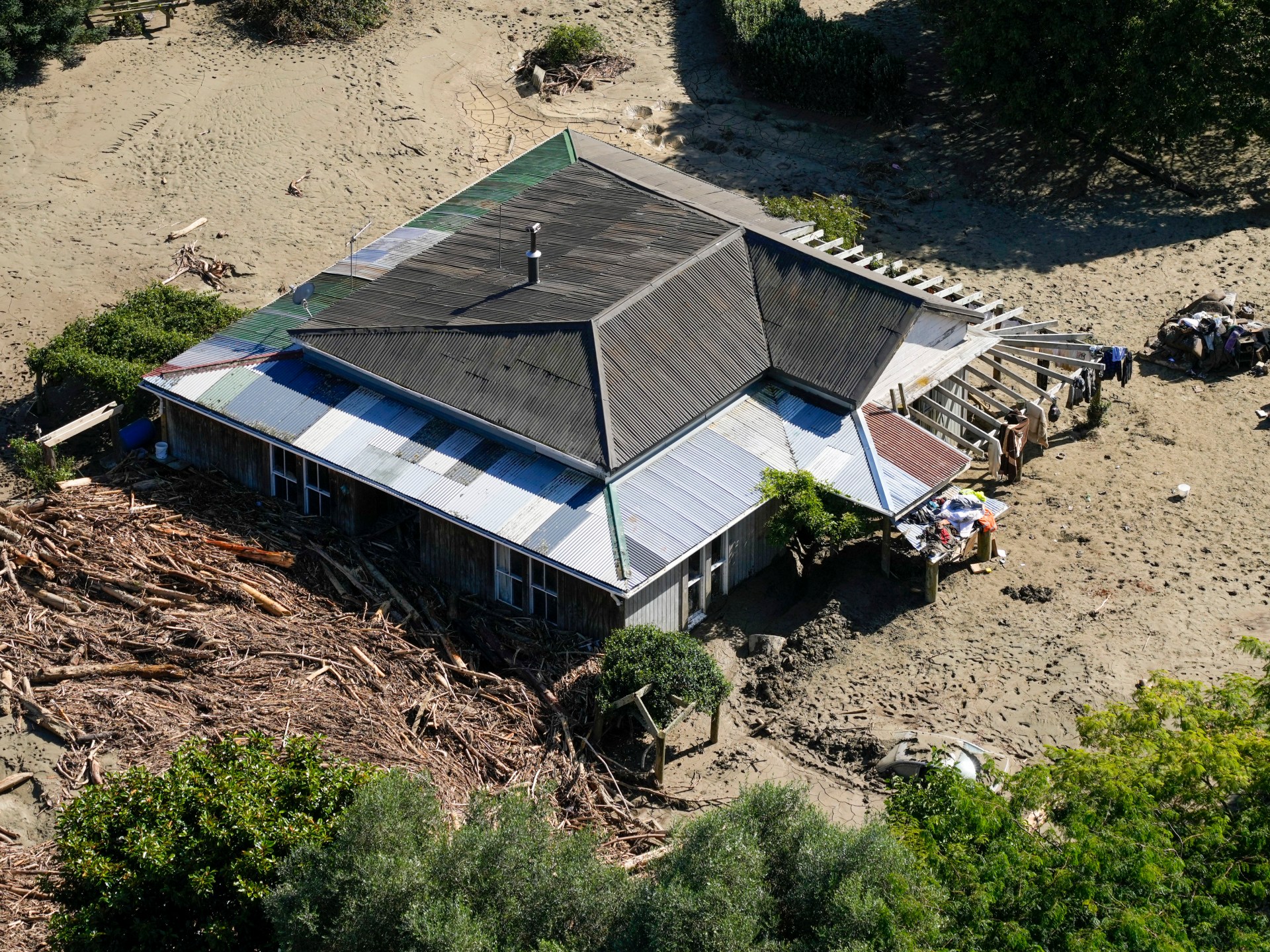The Kyiv museum staff who stayed to protect cherished artefacts
Listen to this story:
Kyiv, Ukraine – Bohdan Patryliak, deputy director of the National Museum of the History of Ukraine, does not recommend a diet of Snickers, Mars bars and white-bread sandwiches.
This had been his staple meal for more than a month when the museum’s grandiose offices, once a centre of academic research, were hastily converted into a fortress protecting some of Ukraine’s most valuable artefacts after Russian forces attempted to storm Kyiv on February 24, 2022.
As Russian troops began to occupy the capital’s western suburbs where Patryliak lived, his mother and sister fled to the relative safety of western Ukraine. So, the softly spoken and erudite 50-year-old made what he believed was a “rational choice” by staying to protect the museum he loved and feared would be a target of Russian aggression.
Patryliak hunkered down in his place of work and filled his days with the physically arduous task of dismantling the museum’s exhibitions and packaging the most valuable artefacts, such as the Golden Pectoral from Tovsta Mohyla, a round breast decoration of a Scythian king unearthed by a Ukrainian archaeologist in 1971, as well as extensive gold and silver numismatic collections for a potential evacuation.
As Russian troops edged closer to Kyiv, he admits to questioning if an evacuation would ever come, especially since saboteur groups, he says, working for Russia and tasked with carrying out assassinations and other insurgent activities behind enemy lines, were operating in the surrounding area during the early stages of the war.
Patryliak cuts a slight figure as he sits today in his office, behind him two imposing stately windows overlooking Kyiv’s historic Podil neighbourhood. He opens his desk drawer and shuffles around some papers before pulling out a small bullet which had flown through one of the exhibition hall’s windows and he believes was a result of crossfire between Ukrainian military forces and saboteurs.
He was not alone during this time. The museum’s director Fedir Androschuk and a handful of staff had also stayed behind. They soon formed a daily routine that he says, “distracted us from our fears and was much more useful than staying home and waiting to be bombed”.
Safeguarding historical artefacts
Patryliak was particularly concerned with protecting the museum’s valuable Scythian gold artefacts, which he feared would be taken by Russian troops as “trophies” if they reached the museum.
Scythian art was produced by ancient Eurasian nomadic tribes out of gold and often depicts animals and mythical creatures. In recent years, a collection of more than 300 Scythian gold items had been the subject of bitter legal wrangling between Ukraine and Russia. The artefacts had been loaned from Crimean museums to an Amsterdam museum before Russia annexed the Black Sea peninsula in 2014 and subsequently requested their transfer back to occupied Crimea. However, in October 2021, a Dutch appeals court ruled in favour of Ukraine.
In late April, Ivan Fyodorov, the mayor of Melitopol, a city in southeastern Ukraine occupied by Russian forces, announced that Russia had seized one of the “largest and most expensive collections” of Scythian gold in the country.
Patryliak and Androschuk were not just worried about high-value artefacts but also those that symbolised “Ukrainian statehood”, something he says is “not recognised by the Russian regime”.
In July 2021, Russian President Vladimir Putin published a now-infamous 5,300-word essay claiming that Russians and Ukrainians were “one people — a single whole”. Then, in a televised address to the nation on February 21, 2022, Putin dismissed that Ukraine had any “real statehood”; instead, the country was part of Russia’s “own history, culture, spiritual space”.
From the outset of the war, Russia had started to destroy sites of Ukrainian cultural heritage, including the Ivankiv museum, located 80km (50 miles) north of Kyiv. The museum, which burned down, contained 25 paintings by folk artists and an icon of Ukrainian identity, Maria Prymachenko.
“Russia invented the pretext that Russia was ‘de-Nazifying’ Ukraine, so we knew they would try and destroy anything related to Ukrainian history,” Patryliak says.
Patryliak highlights “the artefacts that included the image of Ivan Mazepa” as particularly at risk. The regional governor of modern-day Ukraine abandoned his allegiance to the Russian Tsar Peter I in 1708 and sided with Sweden’s Charles XII in the Great Northern War. During the following centuries, the legacy of Mazepa has bifurcated between an anti-Russian traitor and a symbol of Ukrainian national resistance.
In mid-March, a top-secret evacuation process began. Heavily guarded trucks arrived to remove the artefacts that Patryliak and his colleagues had carefully packaged.
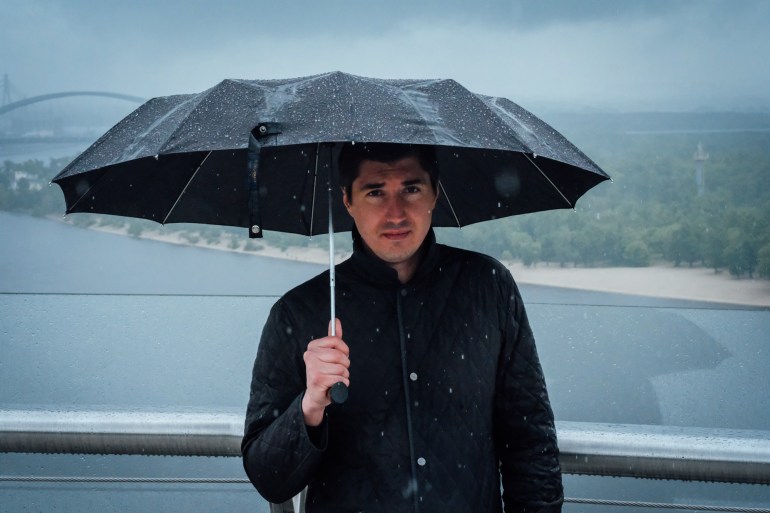
‘There is no more friendship’
Just over a kilometre southeast of the museum and overlooking the meandering Dnieper river stands an imposing, 50-metre (164-foot) high, rainbow-shaped arch unveiled in 1982 to commemorate the 60th anniversary of the USSR. Heavy rain falls on the arch’s shiny titanium, which sits atop a public space, flanked by the scenic Khreshchatyk park and Kyiv’s famed glass bridge.
Previously known as the Peoples’ Friendship Arch, it had become a divisive symbol after Russia annexed Crimea and Russian-backed separatists captured parts of the Donbas in 2014. Following the full-scale invasion of Ukraine in 2022, the structure was renamed the Arch of Freedom of the Ukrainian People by the Kyiv city council.
Oleksandr Nikoriak, the dapper, plainspoken head of the Kyiv city council’s heritage protection office, displays little sentimentality when commenting on the name change. “There is no more friendship, and we don’t need a structure that suggests that we do,” he says, standing beneath the arch.
An occasional ray of sunlight breaks through the heavy cloud and highlights a black lightning-shaped line at the top of the arch. Nikoriak, dressed in a black padded coat and holding a large umbrella, says that activists painted it in 2014 following Russia’s annexation of Crimea and the war began in the Donbas. It’s something that he had approved. “It did not ruin it, but it gave a new understanding.”
Under the arch sits a series of rectangular metal-cased blocks where an eight-metre (26 foot) tall, large bronze statue of a Ukrainian and a Russian standing together and holding a Soviet Order of Friendship once stood.
Authorities removed the monument on April 26, accidentally decapitating the statue of the Russian worker in the process. The mayor of Kyiv, Vitali Klitschko, who was present at the dismantling, said at the time, “You don’t kill your brother. You don’t rape your sister. You don’t destroy your friend’s country. That’s why, today, we have dismantled this monument, once created as a sign of friendship between Ukraine and Russia”.
Nikoriak walks across the glass bridge accompanied by Olena Chernesa, a learned and energetic project manager at the Ministry of Culture and Tourism, towards the lush greenery of Volodymyr Hill located on the steep bank of the river. Suspended more than 20 metres (66 feet) in the air and with a transparent floor, it offers giddy views of the Kyiv skyline. Today, in contrast to the usual crowds enjoying the sights, a lone jogger braving a torrential downpour plods past Nikoriak.
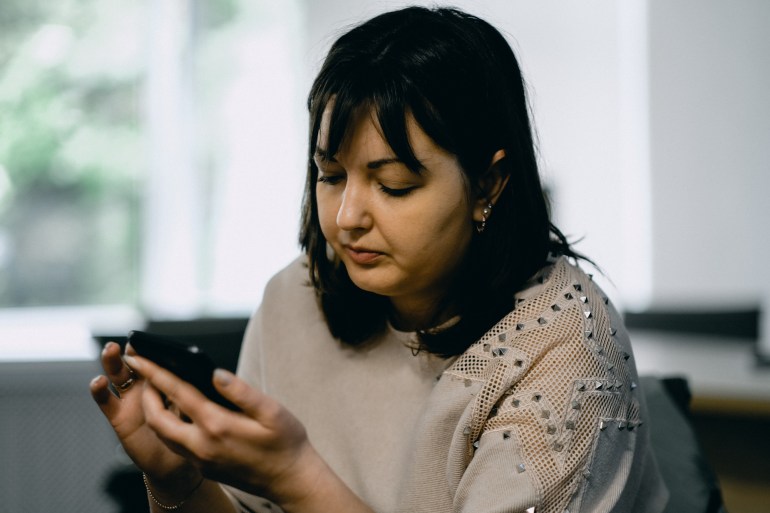
Possible aerial attacks
Unperturbed by the rain and with soaking shoes and suit trousers, Nikoriak begins to recount how, after evacuating the city during the outbreak of war, he had spent 10 restless days in the west before the Kyiv City State Administration asked him to return and help protect the city’s cultural heritage from potential aerial attacks. Eager to help defend his city, he immediately travelled back to the capital.
However, on his journey, he was forced to check into a cheap hotel in Vinnytsia, located in west-central Ukraine, due to the curfew restrictions introduced to protect civilians against air strikes and help police forces identify saboteur groups operating at night.
He recalls waking up and staring at the wall in front of him where a painting of the bronze statue of Volodymyr the Great, who had ruled Kyiv in the 10th century, hung. Kyiv’s oldest sculptural monument depicts Volodymyr with a cross atop a 16-metre (52-foot) high ornate Byzantine-style pedestal. “I knew, at that moment, this statue is where I need to start,” Nikoriak says.
Volodymyr is venerated as a saint in Ukraine and Russia and is another example of divergent interpretations in the two nations’ histories. For many Ukrainians, Volodymyr the Great is a symbol of national identity, having converted the country to Christianity, then known as the Kyivan Rus before Moscow existed. He also appears on the country’s smallest banknote denomination (one hryvnia). However, in Russia, he is known as Vladimir the Great and is celebrated as having converted Russia to Christianity and is the subject of a larger statue erected near the Kremlin six years ago.

Chernesa sees this as an example of Russia “trying to steal Ukraine’s history and rewrite it in their way”. She is currently working on a doctorate related to Ukrainian art and describes Ukraine as not just fighting to protect its land but also “to preserve and take back its history from Russia”.
As they reach the end of the bridge, Nikoriak points up at the statue of Volodymyr, now shrouded in protective plastic and the pedestal surrounded by green metal sheets and layers of scaffolding.
Nikoriak describes the challenge of protecting the city’s monuments as unprecedented. “I didn’t have anyone to take experience from so volunteers provided their own calculations and methods, which they developed along the way,” he says.
These volunteers included engineers and specialists who helped to calculate how much weight each monument could bear and subsequently what material would be best to use for its protection. He is proud that “not a single cent was spent from the Kyiv budget”, with all funding provided by “volunteers, businesses and friends who wanted to help”.
He says each monument with unique dimensions and made with different materials presented a new challenge. For example, Volodymyr the Great’s statue had a base that could not take a heavy load, so a bespoke metal casing structure was designed and constructed at the site. Others, like the monuments to Princess Olga, the first recorded woman who ruled the Kyivan Rus, Saint Andrew the Apostle and the Byzantine educators Cyril and Methodius located at the popular Mikhaylovskaya square, could be covered with more than 4,000 sandbags.
‘Wars destroy culture’
As professionals and civilians rush to preserve the memory of their cultural heritage, several 3D mapping initiatives have sprung up across Ukraine.
Backup Ukraine allows anyone to scan buildings and monuments that have not been destroyed as full 3D models using an app called Polycam on their phone. Since it launched in April, the app has been downloaded more than 6,000 times, with around 10 scans of culturally relevant heritage processed daily.
In Kharkiv, in the northeast of the country that has seen heavy fighting and devastating ariel bombardments, a team of experts, including foreign volunteers, are drawing up detailed 3D maps of the city’s cultural sights. Experts estimate more than 100 of Kharkiv’s roughly 500 listed buildings have been hit by Russian strikes.
As of July 18, UNESCO has verified damage to 164 sites across the country. The Donetsk region, in the southeast of Ukraine, has the most confirmed damage to cultural sites, including the Mariupol drama theatre, which, according to an Amnesty report, was struck by two 500kg Russian bombs in March, “killing at least a dozen people and likely many more”.
Oleg Polovynko, an easygoing 38-year-old IT manager for the Kyiv City Council, pulls out his laptop at his offices on Khreshchatyk Street and opens the city’s website. He scrolls through VR tours of buildings, monuments and several of Kyiv’s opulent Stalinist-era metro stations. The slick, user-friendly feature was introduced in 2021 during the COVID-19 pandemic as a way for people to experience the cultural heritage of Kyiv virtually. After February 24, Polovynko says the VR tours of cultural sites took on a new life. “Before it was for tourism, but wars destroy culture, so we needed to save our history,” he says.
The VR tourism feature, partly created with drone footage, now includes virtual tours of missile strikes, which Polovynko describes as “part of Kyiv’s history” and which can provide war crime and investigation teams with vital evidence.
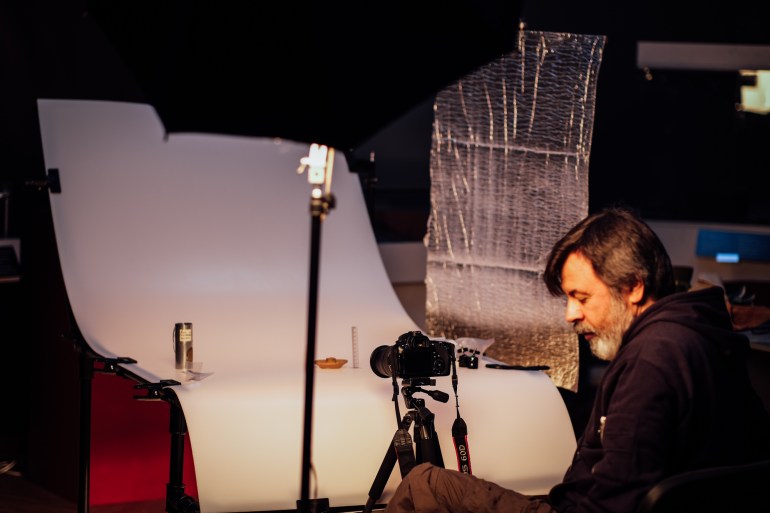
Polovynko and his team also have been repurposing the existing digital platforms. “Our main goal before was to increase the quality of life for citizens, but there was a new goal after the war, and that was to survive in the city,” he says.
Kyiv City Council’s popular Kyiv Digital smartphone app now has new military functionality. For example, a feature that used to display free parking spaces now provides information regarding fuel supplies and the location of bomb shelters around Kyiv.
The council’s IT team has also repurposed the e-democracy function of the app usually used for local elections and voting as a “de-Russification” programme.
In the app, 6.5 million Ukrainian citizens signed on using a BankID, an electronic identification system, and voted for alternative names for more than 300 locations named after Russians or associated with a period of Russian history. Places earmarked to be renamed include Pushkinska Street in central Kyiv, named after the Russian poet and writer of the romantic era, Aleksandr Pushkin. The street will be renamed Yevhen Chykalenko after a publisher and activist during the early 20th century who helped found Ukraine’s first parliament.
The alternatives offered to the public are often Ukrainian cultural figures or national heroes such as Roman Ratushnyi, a Kyiv environmental activist and soldier recently killed fighting in eastern Ukraine.
In recent weeks Ukraine’s parliament has passed laws both restricting the printing and import of Russian books and banning music created after the 1991 collapse of the Soviet Union from being played on media and public transport. The government also increased quotas on Ukrainian-language speech and music content in TV and radio broadcasts.
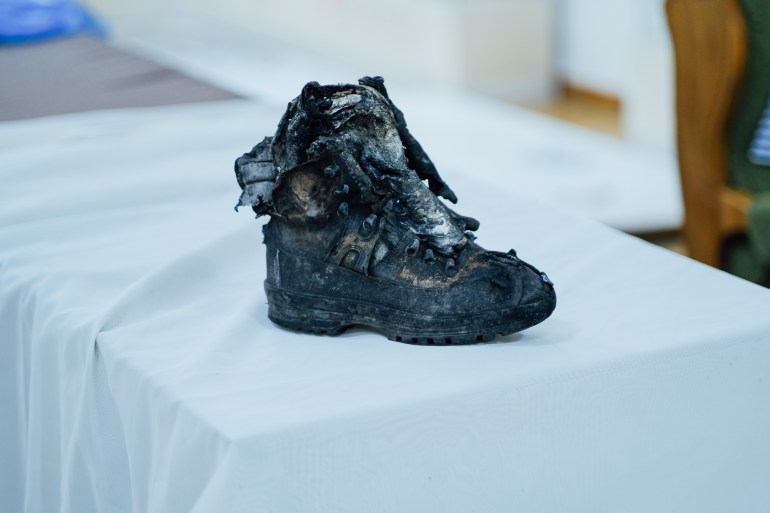
‘Prepared for anything’
Patryliak understands that Ukraine is living through a crucial phase in history, so his role as an historian and museum director is not just to protect its artefacts but to also highlight the destruction it has been forced to endure.
Therefore, Androschuk and himself have now curated an exhibit which displays objects left by Russian soldiers during their occupation of the areas around Kyiv. They include stretchers stained with coagulated blood, boxes of food rations emblazoned with the distinctive star logo used by the Russian military, and personal items such as passports and family pictures.
A similar, more extensive exhibition titled “Crucified Ukraine” is showing at Kyiv’s National Museum of the History of Ukraine in the Second World War, located by the 62-metre (203 foot) tall Motherland statue in the scenic Pechersk district. The exhibition includes a meticulously created replica of a three-room bomb shelter in Hostomel, a town approximately 20km (12 miles) northwest of Kyiv, where 120 people spent 37 days underground.
Patryliak says on the morning of February 24, “the Ukrainian people did not think a full-scale war would happen”. This meant there was no plan within the cultural institutions of what to do, and they had to adapt quickly.
However, his wartime experience has given him purpose. As he walks around the museum’s spacious back rooms, members of his team, who he describes as “like family”, painstakingly record, photograph and log various artefacts kept in the space. Now, he says, if Russians return, they will be “prepared for anything”.

